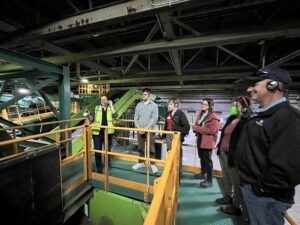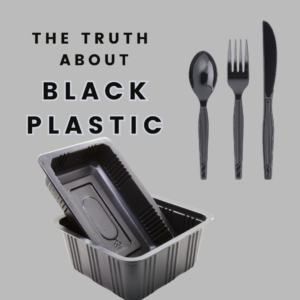Written by Lucy Mullany, Director of Policy & Advocacy, Eureka Recycling
Four states have recently passed Extender Producer Responsibility (EPR) for packaging, with many more introducing or considering similar bills – including Minnesota. EPR policies have long been in place across the country for other materials like paint and electronics, and are well established in the EU, Canada, and other countries around the world for packaging. Their basic purpose is to require product/packaging manufacturers to pay for at least part of the costs to take back, recycle, or properly dispose of their products and packaging. In locations where EPR policies are not currently in place, governments and taxpayers cover all these costs or recycling programs do not exist.
As more states consider EPR policy for packaging, we are finding there are many ways to structure the program. While strong EPR could be one of a number of policies that help us transition to a circular and regenerative economy, a weak EPR system in Minnesota could make our waste and consumption crisis worse while weakening our existing infrastructure.
Minnesota’s Waste
Globally, we are facing a waste crisis that we cannot continue to ignore, and Minnesota needs to act now. Since 2011, our state’s waste generation has been on the rise, with 2021 seeing almost 6 million tons of municipal solid waste. The impacts of this linear consumption are far reaching – accelerating climate change and generating greenhouse gasses; polluting our air, land, and water; and impacting human health especially among Environmental Justice and Black, Indigenous, and People of Color (BIPOC) communities.
According to the MPCA, nearly two-thirds of what is landfilled and burned in Minnesota could be reduced, reused, recycled, or composted. Much of what is left could be eliminated or redesigned. While it could be easy to blame individuals for “not doing the right thing” with their discards, the truth is we do not have systems and regulations in place to make reduction, recycling or composting easy or accessible for all Minnesotans.
At Eureka, we process over 400 tons of paper, bottles and cans, and other packaging every day. We are experiencing first-hand the increase in unnecessary packaging, single-use plastic, and products mislabeled with the recycling arrows. These products increase the cost of recycling for residents and local governments, and cause harm to public health and the environment.
We cannot rely on producers to voluntarily make the changes we need. Rather, we need policies that will reduce waste, drive redesign, and increase recycling and composting rates. These policies include a refund recycling program, food waste diversion systems, truth in labeling for recycling, reforms to electronic recycling programs, and an effective EPR program for packaging.
Not all EPR Policy is Equal
Not all EPR bills are the same. While brands may want us to take a cookie cutter approach, that does not make sense for Minnesota and could, in fact, be harmful – weakening our robust recycling infrastructure and doing nothing to reduce plastic pollution. For example, last year Colorado passed an EPR bill. Their state had a very low recycling rate of 16, so the primary goal of their EPR program was to expand recycling access. This is not the case in Minnesota where our combined recycling and organics rate is 49%. While there are access issues, Minnesota has one of the most robust recycling infrastructures in the country. For a state that already has such a strong foundation, Minnesota’s EPR bill should be a national model for how we leverage and improve that foundation to achieve the best possible outcomes for people and the planet.
While EPR policies vary, the common goals are to provide a strong incentive to companies to redesign and reduce packaging and generate a dedicated stable financial source to improve collection, sorting, and recycling, composting, and reuse infrastructure. Designing these policies thoughtfully can ensure they deliver on those goals.
Key Components of a Strong EPR Policy for Minnesota:
An effective EPR for packaging policy in Minnesota should do the following:
- Ensure Strong Enforcement and Oversight: The MPCA and an Advisory Board, representing impacted constituencies, should have oversight and enforcement powers over the program. This structure should allow for transparency and public engagement.
- Require an Independent and Comprehensive Needs Assessment: In addition to funding services and education, program fees will be used to strengthen and develop reuse, recycling, and collections infrastructure. A needs assessment will inform where these investments are needed most in the state, and thus should be completed by an independent third-party with engagement from impacted communities to ensure we improve equity in recycling and reuse infrastructure.
- Include Strong, Enforceable, Targets: To drive waste reduction and packaging redesign we need enforceable target rates for waste reduction, reuse, and recycling. The MPCA must be empowered to enforce the targets set in statute. Producers should be held accountable to meet established targets and be responsive to community needs through clear accountability measures
- Leverage Infrastructure & Support Sustaining Jobs: Whether producers are reimbursing cities and counties for recycling program costs, or directly contracting with service providers, we need to ensure that they are not simply paying for the cheapest services. The EPR program must require open and transparent bidding processes, safety standards for workers, sustaining wages, and responsible end markets.
- Include All Packaging Types: To create an EPR program that supports the system as a whole, all materials types need to be included: plastic, aluminum, steel, glass, and paper products. No exemptions.
- Reduce Unnecessary Packaging and Plastic Pollution. Through an approach called “eco-modulation”, producers should be charged based on the amount and type of packaging that they put into the market. Eco-modulation should be designed to incentivize source reduction, reuse, recycling and composting (in that order) while creating disincentives or bans on the most toxic packaging.
- Include Strong Recycling and Recyclable Definitions: For an EPR program to improve and increase recycling rates, we need a strong definition of what recycling actually is to avoid false solutions and greenwashing. This means ensuring that producers cannot invest in “chemical recycling” and claim they are meeting their recycling targets. For example, turning plastic to fuel using gasification, pyrolysis, incineration or a similar process. This will increase pollution and do nothing to reduce extraction or drive packaging redesign.
- Supports Investments in Proven Technologies: Any investment in new technologies must first demonstrate high capture rates and better outcomes for Environmental Justice communities when it comes to public health, worker safety, toxics, climate and water, air and land pollution.
As we work to move Minnesota towards a more circular economy that supports an equitable and sustainable future, there are many policies that we need implemented. EPR is not the panacea for all our waste problems. But, while a strong EPR policy could help address some of these problems, a weak EPR policy could make our waste crisis worse.
Companies see the wave of EPR policies coming in states across the country and are prepared to fight for policies that lack the teeth necessary to enforce packaging reduction and redesign. As advocates and community members, we need to fight for a system that is going to build on progress already made, hold brands accountable for excessive, toxic, and unnecessary packaging, and create the infrastructure we need to reduce our waste.
If you’d like to get more engaged in EPR for Packaging, please reach out to Lucy Mullany at Eureka Recycling.
This piece was originally posted in the August edition of the Minnesota Environmental Partnerships newsletter: MEP Insider
Share this Story!

Eureka Recycling Celebrates 20 Years and Facility Upgrade
This Earth Day, we are proud to celebrate two major milestones:two decades of pioneering mission-driven materials processing and the launch

Ditching Black Plastic
Black plastics are bad news. They’re toxic, and they’re not recyclable. So why are we still using them for

We Need Action on Electronic Waste
Residents across Minnesota need free and equitable access to electronics and battery recycling. Take Action Now. Legislation enacted in 2007

Our 2025 Policy Platform: Advancing Zero Waste Solutions
As the 2025 Minnesota legislative session kicks off this month, communities around the country continue to feel the impacts of
